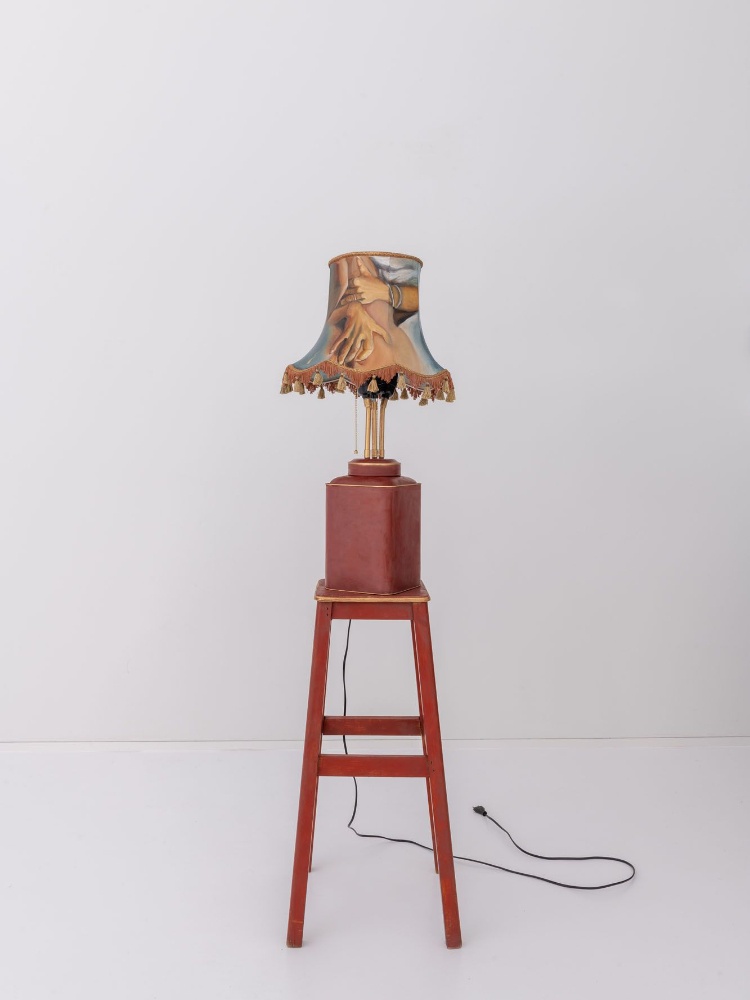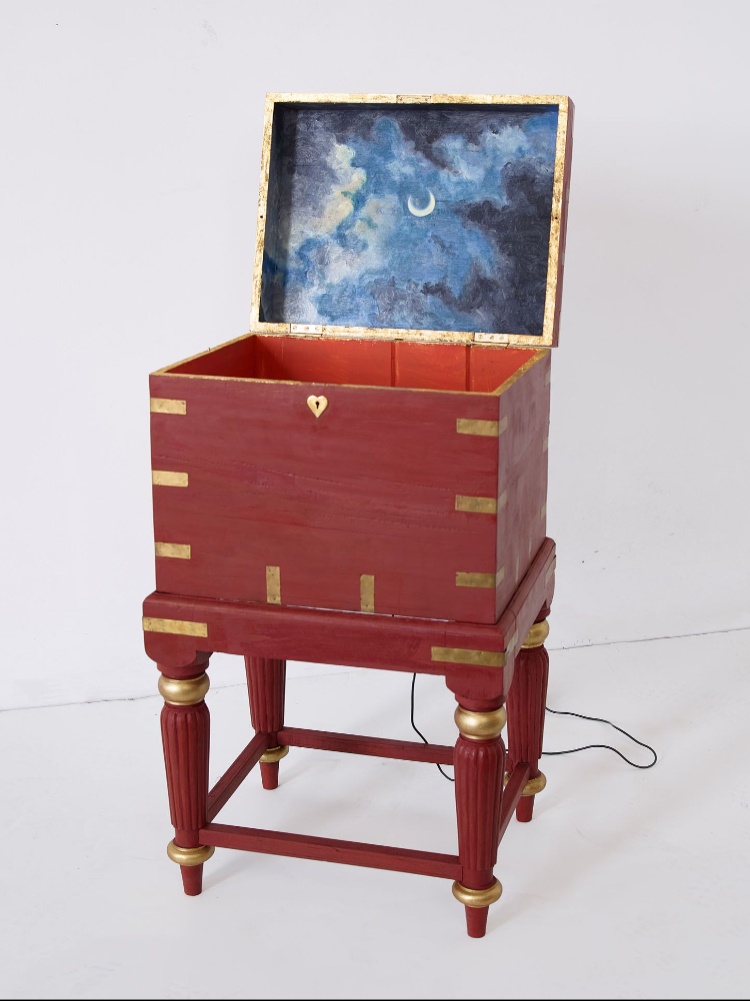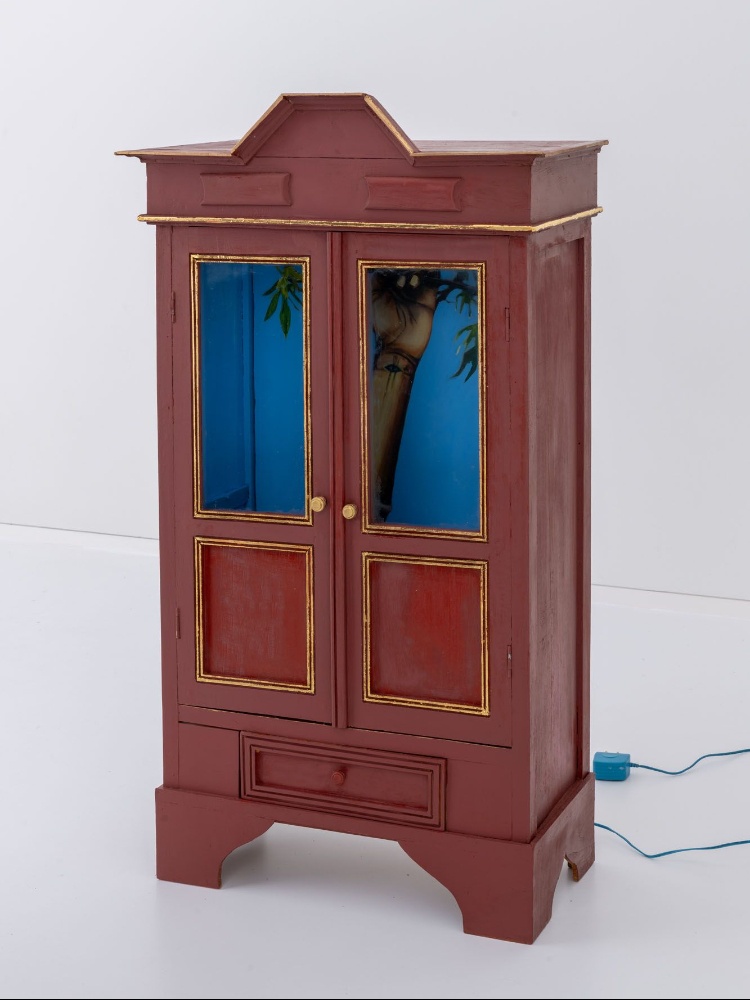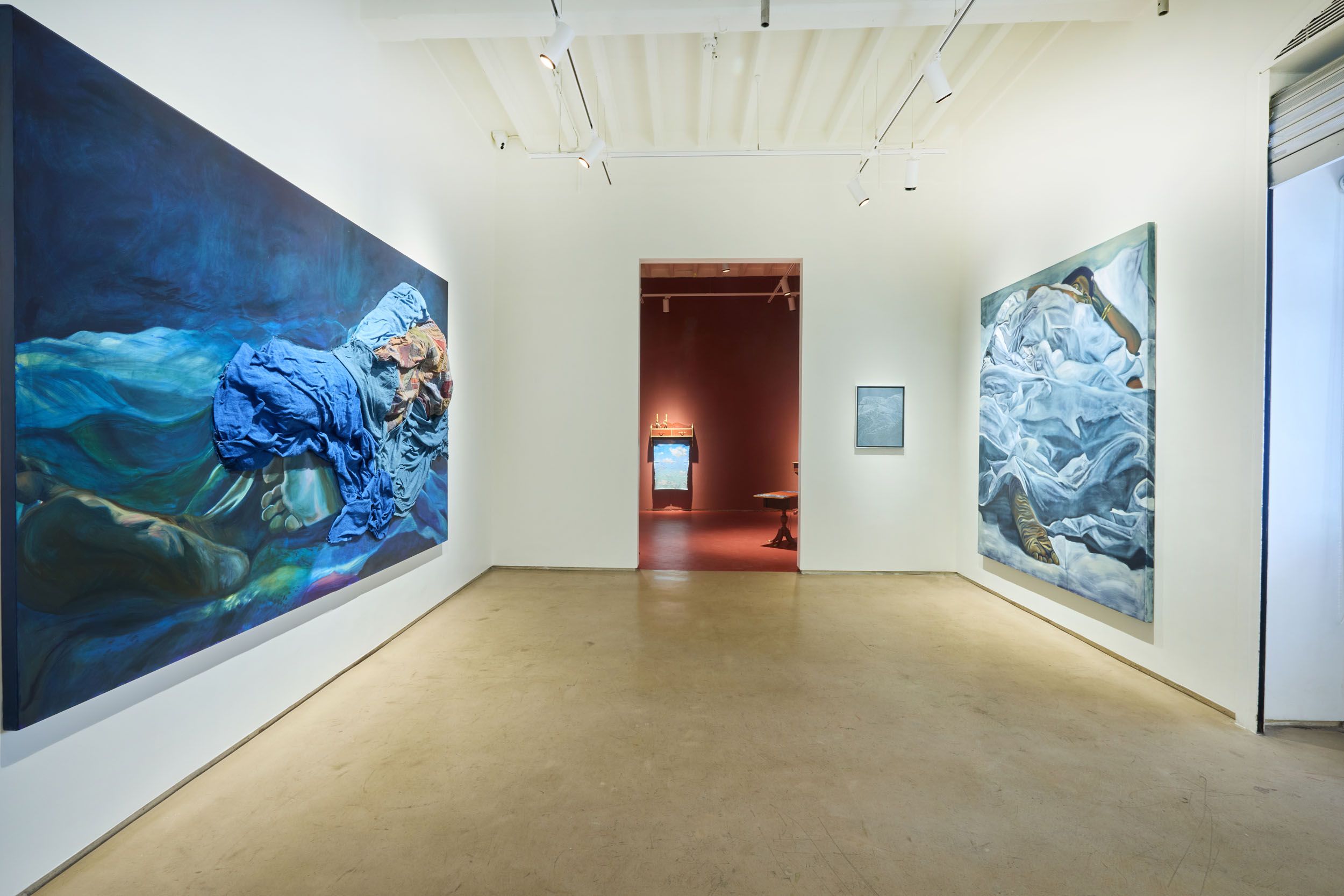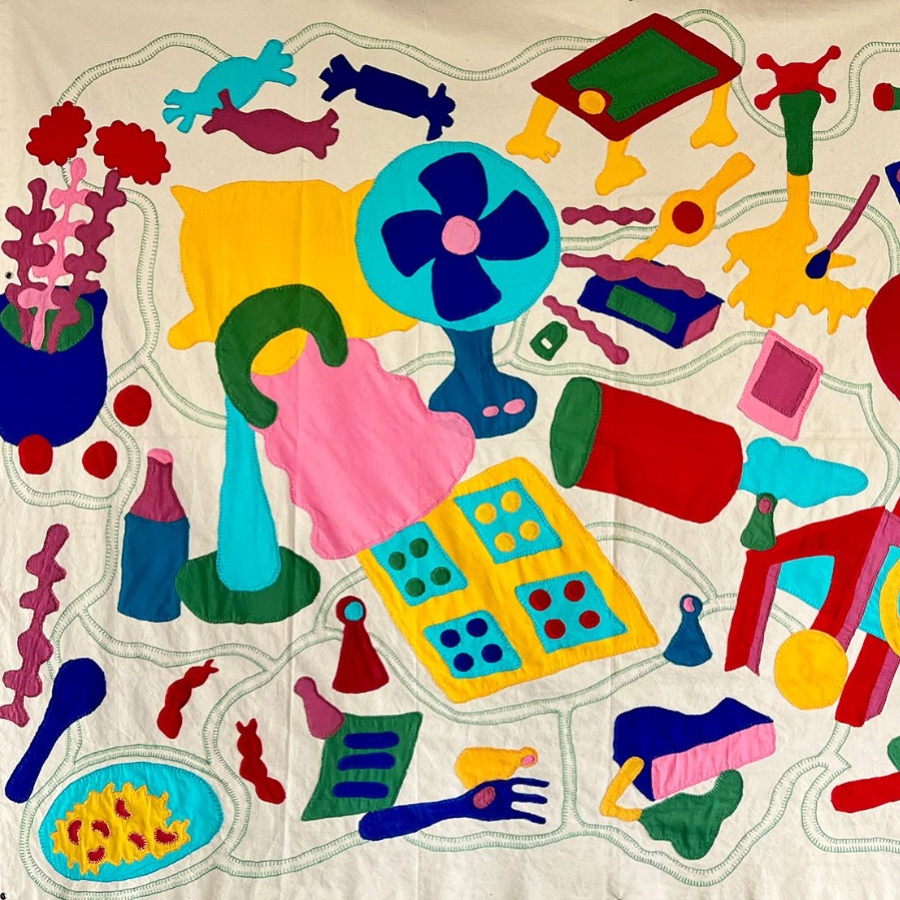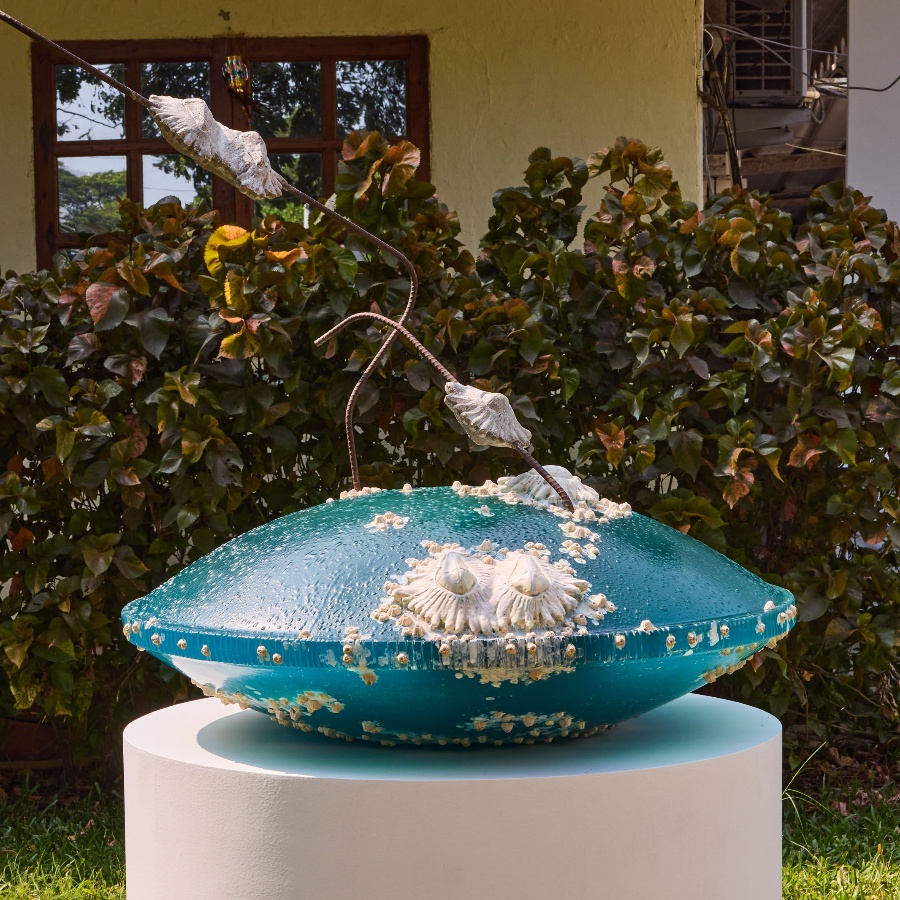I meet Bhasha Chakrabarti a few days before her solo exhibition, Karvat, opens at Experimenter Colaba in Mumbai. Wearing a neon-green handwoven cotton sari with white boots and pigtail braids, she’s busy adding the finishing touches to one of her paintings. A body memoirist and an orchestrator of emotions through her art, she immediately tells me that her latest exhibit is inspired by Ismat Chughtai’s seminal short story, Lihaaf. Published in 1942, the story is an exploration of queer female desire and pleasure, told through the metaphor of a quilt.
Chakrabarti leads me into a gallery room, whose walls and floor have been painted a deep shade of red—an interpretation of Begum Jaan’s zenana in Lihaaf. “This is the heart of the exhibition,” she says as my eyes scan the room, where 10 standalone antique furniture pieces—including a lamp, a side table, and a wall-mounted grandfather clock—appear unassuming and quiet, as though safeguarding a collective secret. However, when Chakrabarti leans towards a chest of drawers and slides open a compartment, a raga elegantly spills into the room.
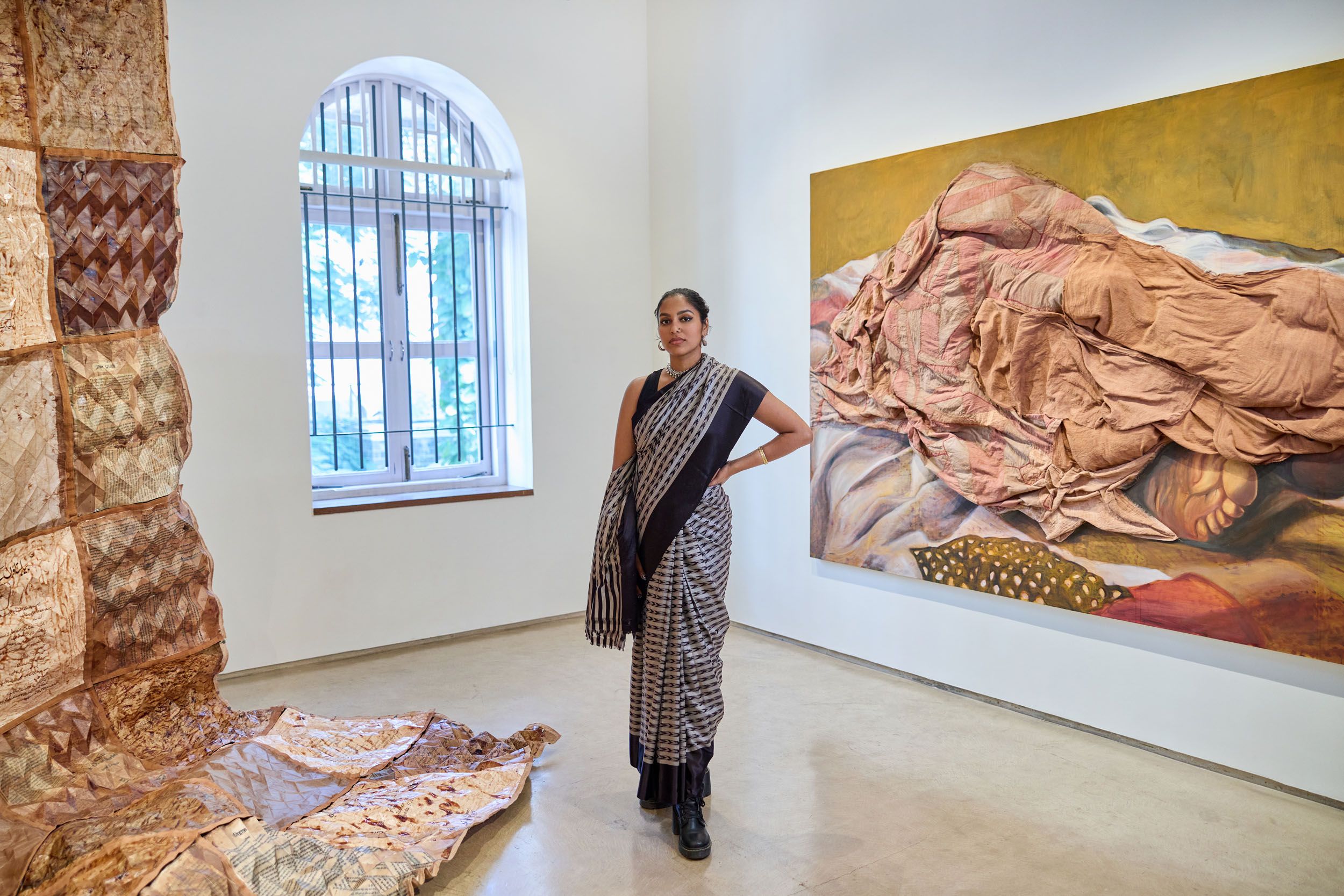
Through the performance of opening a vanity door, tugging a lamp’s chain-switch or unfolding a chair, the pieces transform into music boxes. Through the series, there is a suggestive play of conceal and reveal. The viewer assumes the trifold role of the voyeur, lover, and performer—where the musical sculptures, when opened individually, in pairs, or as a group, invite the viewer to step into the role of an orchestra conductor. “Art is something that everyone can look at, engage with, and have a legitimate opinion about. To me, the best work is the kind that allows people to explore it from multiple entry points and have a conversation about it together,” she says.
Called the ‘Ajaibghar’ series, it cleverly gestures towards the anatomy of ragamala paintings. While the furniture’s façade is painted red with golden borders, its interiors vividly depict the shifting moods, seasons, and colours of the sky (from cyan to indigo). The paintings also feature nayikas (the women protagonists), who embody different emotional states. Whether it’s ‘Ajaibghar (Devagandhar)’, which reveals the pensive chin of a woman resting on her knee, waiting for her lover; or ‘Ajaibghar (Kakubha)’, depicting a woman’s slender wrist clutching a garland of flowers—Chakrabarti’s paintings exude sensuousness with fleeting glimpses of the forlorn nayika. “The outside of the furniture serves as a border, while the inside is the painting,” she explains. On another level, “these objects explore the dailiness of the domestic.”

